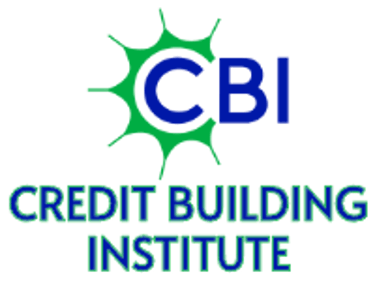Principal Priorities: Equipping the Next Generation with Credit Education in High Schools
YOUTH CREDITFINANCIAL EDUCATIONPERSONAL CREDIT
M. Sennette, CBI Contributor
10/27/20255 min read


As a dedicated activist for economic change and a credit-building expert, I amplify the importance of financial education, particularly for high school students seeking to establish a credit history. With this urgency, I address you, the principals, the educational stewards of our future leaders.
In the heart of our bustling urban centers, amidst the din of daily life and the myriad challenges that face inner-city communities, lies a beacon of hope and potential: our high schools. Often seen as mere waypoints in young minds' educational journey, these institutions are crucibles for tomorrow's leaders.
At the helm of these beacons are figures of paramount importance—school principals. Their role extends beyond administrative duties, positioning them as knowledge experts for their students. In this transaction space, students trade their time and focus their attention in return for the vast knowledge base of principals and teachers.
This guide examines the profound impact of school principals on inner-city high school students, revealing the nuances of their contributions to developing academically and economically proficient individuals.
Also, this guide will address the following reasons why financial education and credit building are crucial for high school students:
Building Financial Literacy: Understanding concepts like budgeting, saving, investing, and managing debt equips students with essential life skills. It empowers them to make informed financial decisions throughout their lives.
Early Exposure: Introducing financial education early helps students develop healthy money habits. They learn about the value of money, the impact of their choices, and the consequences of their economic actions.
Credit Building: Learning about credit scores, reports, and responsible credit use is vital. High school students can begin building a positive credit history, which will benefit them when applying for loans, renting apartments, or securing employment later on.
Avoiding Debt Traps: Financial education teaches students to avoid predatory lending practices, excessive credit card debt, and other financial pitfalls. It encourages responsible borrowing and spending.
Career Preparedness: Understanding personal finance prepares students for the workforce. They learn about salary negotiation, retirement planning, and workplace benefits.
Financial education equips students with the tools to navigate the complex economic landscape and make informed decisions that positively impact their future.
The Significance of the Credit Dilemma
In our society, credit isn’t just a financial tool but a gateway to opportunity. The data from Prosperity Now presents a clear picture of the current state of financial health in the United States. Nearly half of U.S. households have credit scores below the "prime" threshold, which limits their access to affordable financial products and services. For students transitioning into adulthood, understanding and managing credit is essential to avoid the pitfalls that often trap many in a cycle of debt and poverty.
Why High School is the Crucial Juncture for Credit Education
High school is a pivotal period during which young adults shape their futures. Here, the groundwork for financial literacy should be laid, ensuring students are prepared for the economic challenges of adulthood.
Principals in inner-city schools craft and uphold a vision of academic excellence and holistic development. By incorporating credit education into the curriculum, they can equip our students with the knowledge to build and maintain good credit, a crucial component of financial stability.
Credit as a Building Block for Prosperity
Addressing educational resources and opportunities disparities is a cornerstone of the principal’s mission. Principals work tirelessly to secure the necessary tools, technologies, and teaching talent that cater to the unique needs of their student population. Implementing credit education can be the cornerstone for building prosperity in your community.
Good credit opens doors. It can mean the difference between securing a low-interest loan for college or a car and being subjected to high interest rates that can lead to insurmountable debt. For many students, particularly those from low-income families or communities of color, the lack of credit education can perpetuate economic disparities. It's not merely about borrowing money; it's about creating a foundation for wealth building that includes access to better job opportunities, housing, and even the ability to start a business.
Principal Priorities: Equipping the Next Generation with Credit Education in High Schools
This guide examines the profound impact of school principals on inner-city high school students, revealing the nuances of their contributions to developing academically and economically proficient individuals. It will also address reasons why financial education and credit building are crucial for high school students.
Five Practical Steps Towards Credit Building in Schools
1. Curriculum Integration: Effective inner-city principals are at the forefront of integrating innovative teaching methods and curricula that resonate with the realities of their students' lives. This relevance in education is critical to engaging and motivating students to learn and succeed. Courses on personal finance, explicitly focusing on credit building, should be integrated into the high school curriculum. Students must understand how credit works, the importance of credit scores, how to read a credit report, and the impact of their financial decisions on their credit.
2. Simulated Credit Experience: With the digital age in full swing, principals should promote technology integration in learning, ensuring students are adept in digital literacy skills critical for future success. Simulations and games that mimic real-life financial scenarios can be instrumental in teaching students about credit. This experiential learning can demystify the process of building credit and illustrate the consequences of good and bad credit practices.
3. Partnerships with Financial Institutions: Recognizing the wealth of knowledge and support within their communities, principals can actively seek partnerships with local organizations, businesses, and higher education institutions. These collaborations enrich the educational experience and open doors to new opportunities for students. Leveraging collaborations with local banks and credit unions can provide students with hands-on opportunities to engage with credit-building products, such as secured credit cards designed specifically for students.
4. Credit Building as Community Service: Principals encourage students to develop resilience and leadership skills through various programs and initiatives. They spotlight the importance of community awareness, perseverance, critical thinking, and ethical decision-making. Please encourage students to engage in community service that helps build their credit. This could involve volunteering with nonprofits that focus on financial education or participating in community credit awareness campaigns.
5. Mentorship Programs: Principals are relentless advocates for their students, championing their achievements and need to district leaders, policymakers, and the wider community—pair students with financial advisors or mentors who can guide them through their first steps of building credit. Real-life stories and advice from individuals who have navigated the credit system successfully can be powerful.
The Broader Impact of Credit Education
Educating students on credit building is an investment in their futures and the economic health of our communities. As these students grow into financially savvy adults, they contribute to a more stable and prosperous economy. They are less likely to fall prey to predatory lending and more likely to invest in their communities, whether through homeownership, entrepreneurship, or other forms of economic participation.
A Call to Action
I extend a call to action to the high school principals, educators, and policymakers. The data from the Credit Building Institute is a sobering reminder of the financial fragility many face. We can change this trajectory by instilling economic competence in our students today. By prioritizing credit education, we are not just teaching our students how to manage money but giving them the tools to build a secure and prosperous future.
“In the work of education, we can’t do it alone. We don’t have all the ideas, but the people that are around us, the people that are across the street in those businesses or that may be in the classroom, setting up that they have answers to the problems that we had, and getting them at a table, getting them on a Zoom that we can actually support and serve our students in the best way possible with just knowing that you aren’t in it alone. And to utilize the resources and the people that are surrounding you.”
- Dr. Danya Woods, an Assistant Principal
In conclusion, the role of credit in shaping economic opportunities is crucial and cannot be overstated. As educators, we are responsible for ensuring that our students are not left to navigate this complex terrain on their own. We must advocate for and implement comprehensive credit-building programs within our schools.
The time to act is now; our students' well-being and the vibrancy of our communities depend on it. Let us commit to fostering an environment where building personal credit is seen not just as a financial strategy but as a stepping stone to prosperity and empowerment for all.
GLOSSARY QUICKLINKS
Term 1
Term 2
Term 3
Term 4
Term 5
Credit Building Institute
Together, we can build
creditable relationships and results


Copyright © 2023 Credit Building Institute - All Rights Reserved.
Trusted credit building with 24/7 encrypted data. Build your credit with affordable credit builder plans and reporting to all 3 credit bureaus, helping improve your credit score quickly and safely. 100% money-back guarantee (T&Cs)
